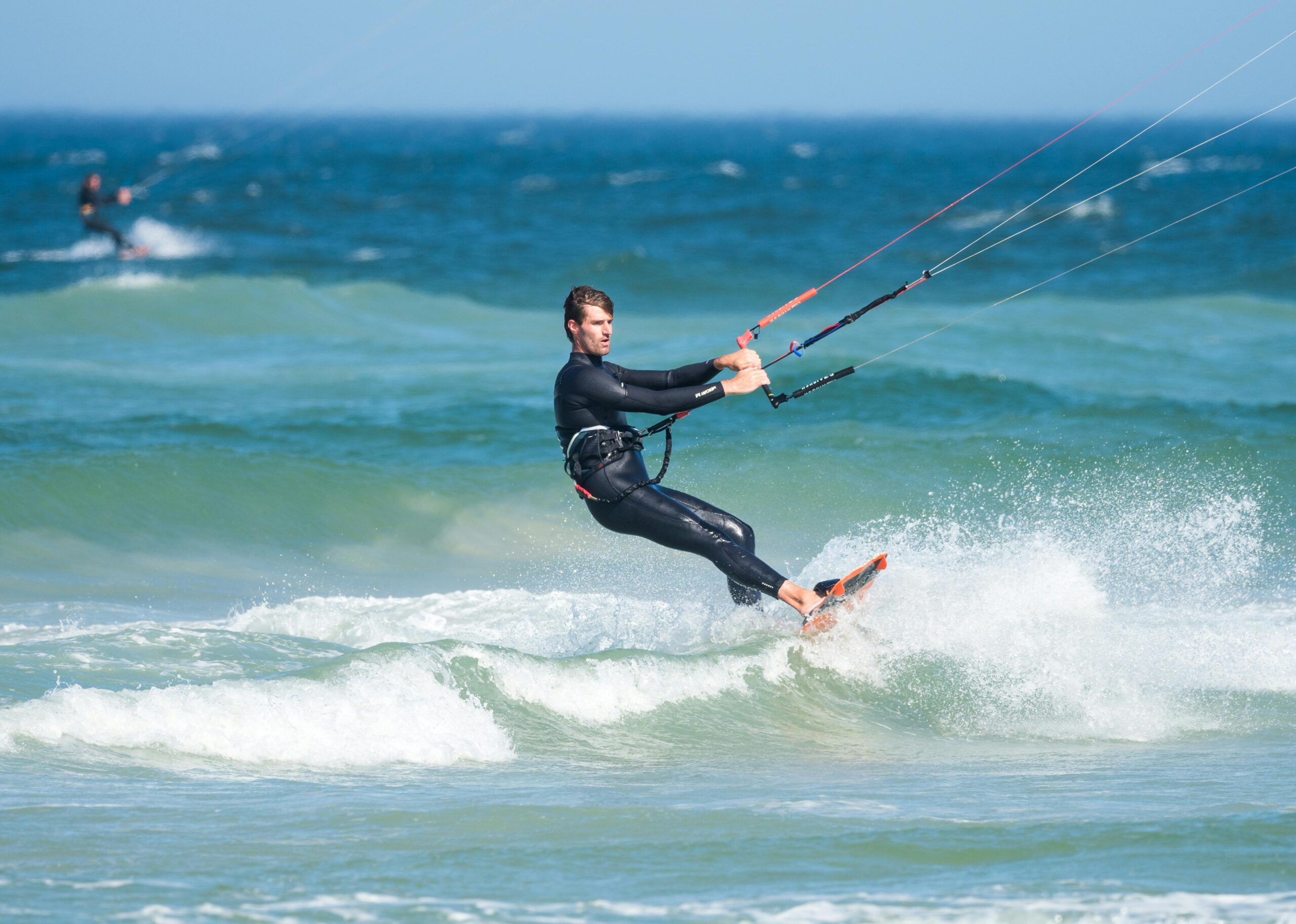Do you know if a 4/3 wetsuit is suitable for summer? Or are you wondering what makes this wetsuit thickness a good choice for warm weather surfing? We’ve got all the answers you need! In this article, we’ll explore why a 4/3 wetsuit might be a great option for summer use, especially in certain water temperatures. Not only will we explain when you should wear a 4/3 wetsuit, but we’ll also cover other key considerations for staying comfortable in the water.
Can You Wear a 4/3 Wetsuit in Summer?
Yes, you can wear a 4/3 wetsuit in summer. A 4/3 wetsuit is an excellent choice for water temperatures between 11°C and 18°C (52°F to 64°F), which are typical in the spring and early summer months. Even in summer, the water temperature may still be on the cooler side in certain locations, making a 4/3 wetsuit a good option to keep you warm and comfortable.
The 4/3 wetsuit is named for its thickness: 4mm of neoprene around the chest and core for extra insulation and 3mm around the arms and legs for flexibility. This combination gives you the warmth needed for cooler water while still providing enough mobility for summer activities like surfing or diving.
Why Is a 4/3 Wetsuit Suitable for Summer?
A 4/3 wetsuit is ideal for summer when the water temperature remains on the lower end. In many coastal regions, even during the summer months, the water can be chilly in the mornings or after a windy day. The 4mm neoprene on the body keeps your core warm, preventing hypothermia and allowing you to stay in the water for longer periods.
The thinner 3mm neoprene on the arms and legs ensures that your movement is not restricted, making it easier to paddle or swim. This balance of warmth and flexibility is what makes the 4/3 wetsuit so popular among surfers and water sports enthusiasts during the cooler summer months.
How Does Wetsuit Thickness Relate to Water Temperature?
Wetsuit thickness is directly linked to water temperature. The thicker the neoprene, the more warmth it provides. However, thicker wetsuits can also be more restrictive, which is why it’s important to choose the right thickness for your activity and water conditions. A 4/3 wetsuit offers the perfect balance of insulation and flexibility for water temperatures between 11°C and 18°C (52°F to 64°F).
If you’re surfing or swimming in warmer waters above 18°C (64°F), a thinner wetsuit like a 3/2 mm or a shorty might be more appropriate. But for waters in the lower temperature range, a 4/3 wetsuit is ideal, allowing you to stay warm without overheating.
| Water Temperature | Recommended Wetsuit Thickness |
| 11°C – 18°C (52°F – 64°F) | 4/3 mm |
| 18°C – 22°C (64°F – 72°F) | 3/2 mm |
| Above 22°C (72°F+) | Shorty or Rashguard |
Can a 4/3 Wetsuit Be Too Hot in Summer?
It can be, depending on the water temperature. If the water temperature is above 18°C (64°F), a 4/3 wetsuit may feel too warm. In such cases, a thinner wetsuit or even a shorty would be more comfortable. However, if you are surfing early in the morning or at a location where the water remains cold despite warm air temperatures, a 4/3 wetsuit will still provide the right amount of warmth without overheating.
- Great for chilly summer mornings or windy days
- Offers flexibility and warmth balance
- Might feel too warm if water temperature exceeds 18°C (64°F)
When Should You Wear a 4/3 Wetsuit?
A 4/3 wetsuit is best worn in cooler water temperatures between 11°C and 18°C (52°F – 64°F). If you’re in a location where the summer water temperatures stay in this range, a 4/3 wetsuit is a great choice. It’s also ideal for those early morning or late evening surf sessions when the air temperature drops, or when there’s a strong breeze cooling the water.
In warmer locations where water temperatures exceed 18°C, you may want to opt for a thinner wetsuit to prevent overheating. But for colder summer waters, a 4/3 wetsuit will keep you comfortable without sacrificing mobility.
FAQs
1. Can You Wear a 4/3 Wetsuit in Warm Water?
Not typically. A 4/3 wetsuit can feel too warm in water above 18°C (64°F). If the water is warmer, a 3/2 mm or shorty wetsuit would be more suitable.
2. What Does 4/3 Wetsuit Mean?
It refers to the thickness of the neoprene material. A 4/3 wetsuit has 4mm thick neoprene around the core and chest area for warmth, and 3mm thick neoprene around the arms and legs for flexibility.
3. Is a 4/3 Wetsuit Good for All Year Round?
It depends on the water temperature. A 4/3 wetsuit is ideal for spring and summer when water temperatures range from 11°C to 18°C (52°F – 64°F). For colder conditions, a thicker wetsuit is recommended.
4. What Temperature Should I Wear a 4/3 Wetsuit?
You should wear a 4/3 wetsuit in water temperatures between 11°C and 18°C (52°F – 64°F). In warmer water, a thinner wetsuit or shorty is recommended.
Conclusion
To wrap it up, yes, you can wear a 4/3 wetsuit in summer, especially in cooler water temperatures between 11°C and 18°C. It’s a great choice for those chilly mornings or windy beach days when the water hasn’t warmed up yet. However, if the water temperature exceeds 18°C, it might feel too warm, and you’ll want to consider a thinner wetsuit. Always choose a wetsuit based on water temperature to ensure comfort and flexibility during your summer adventures.
